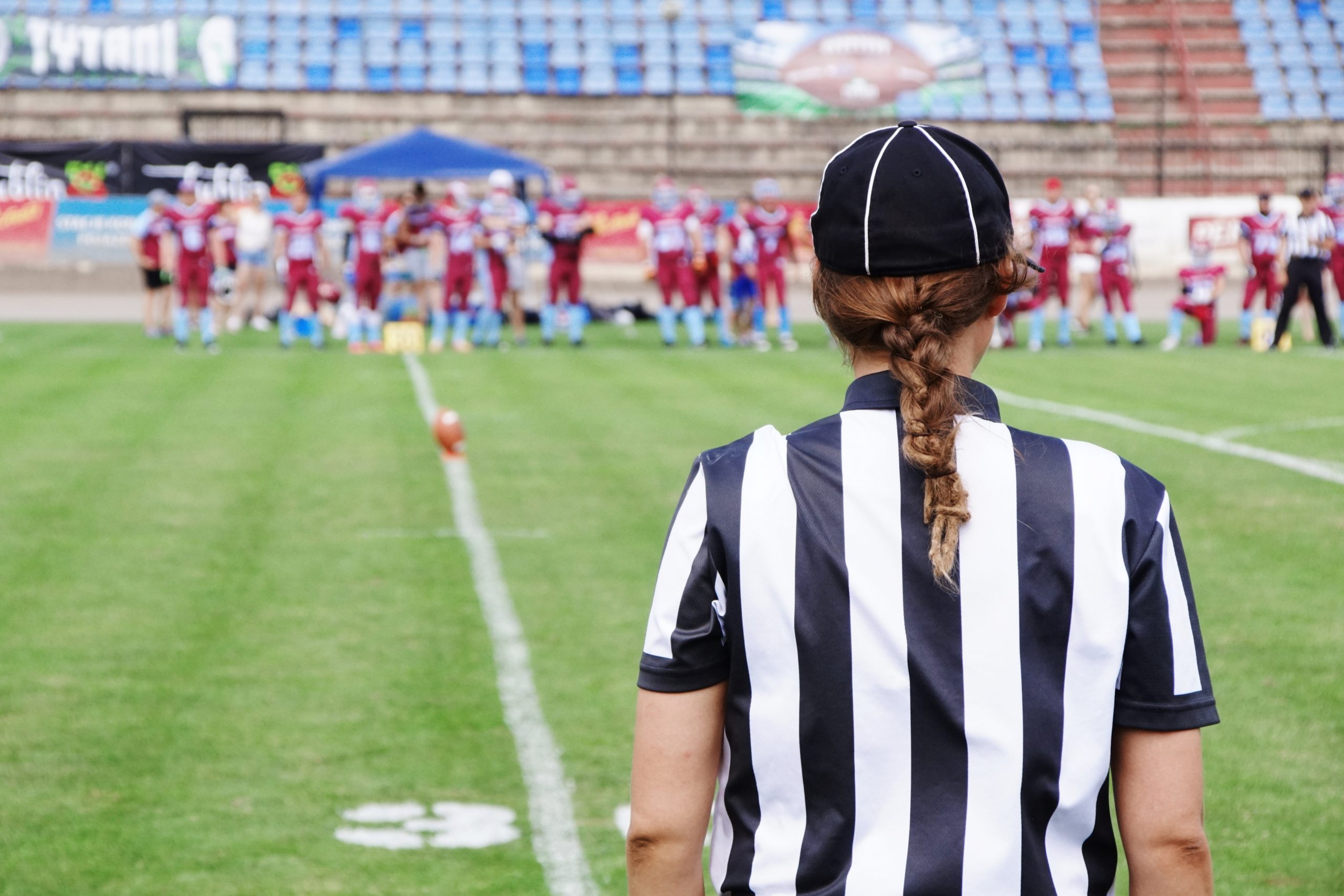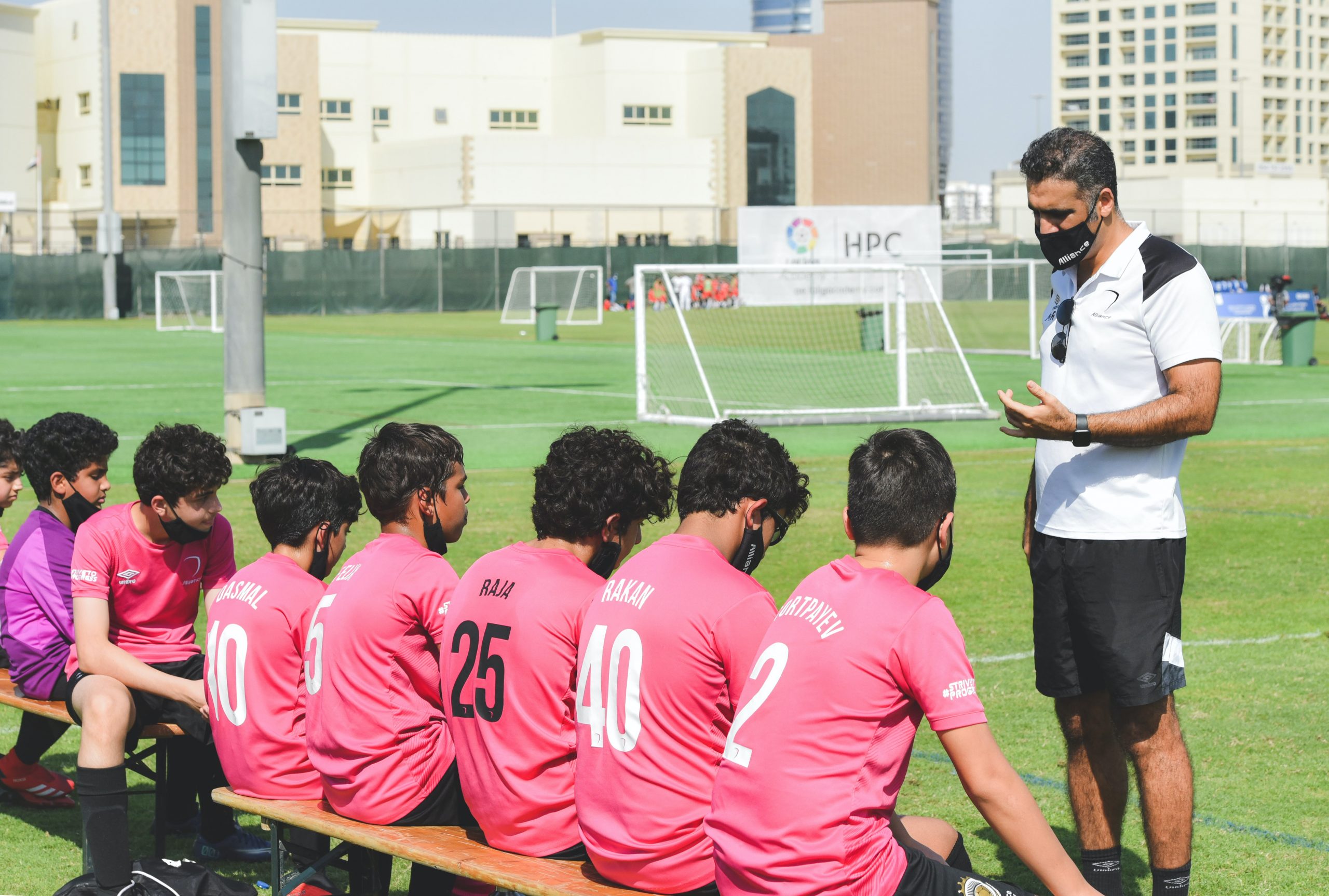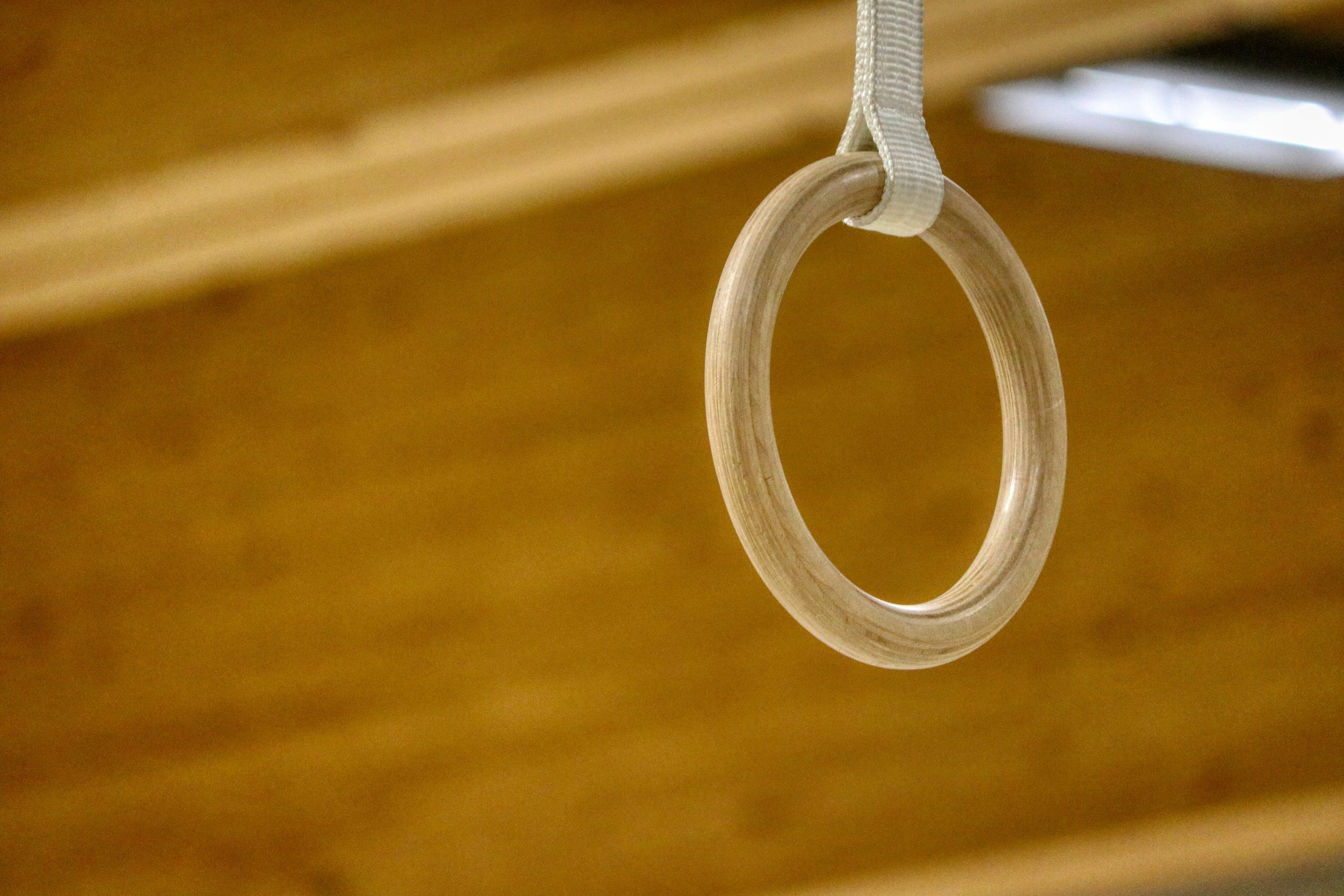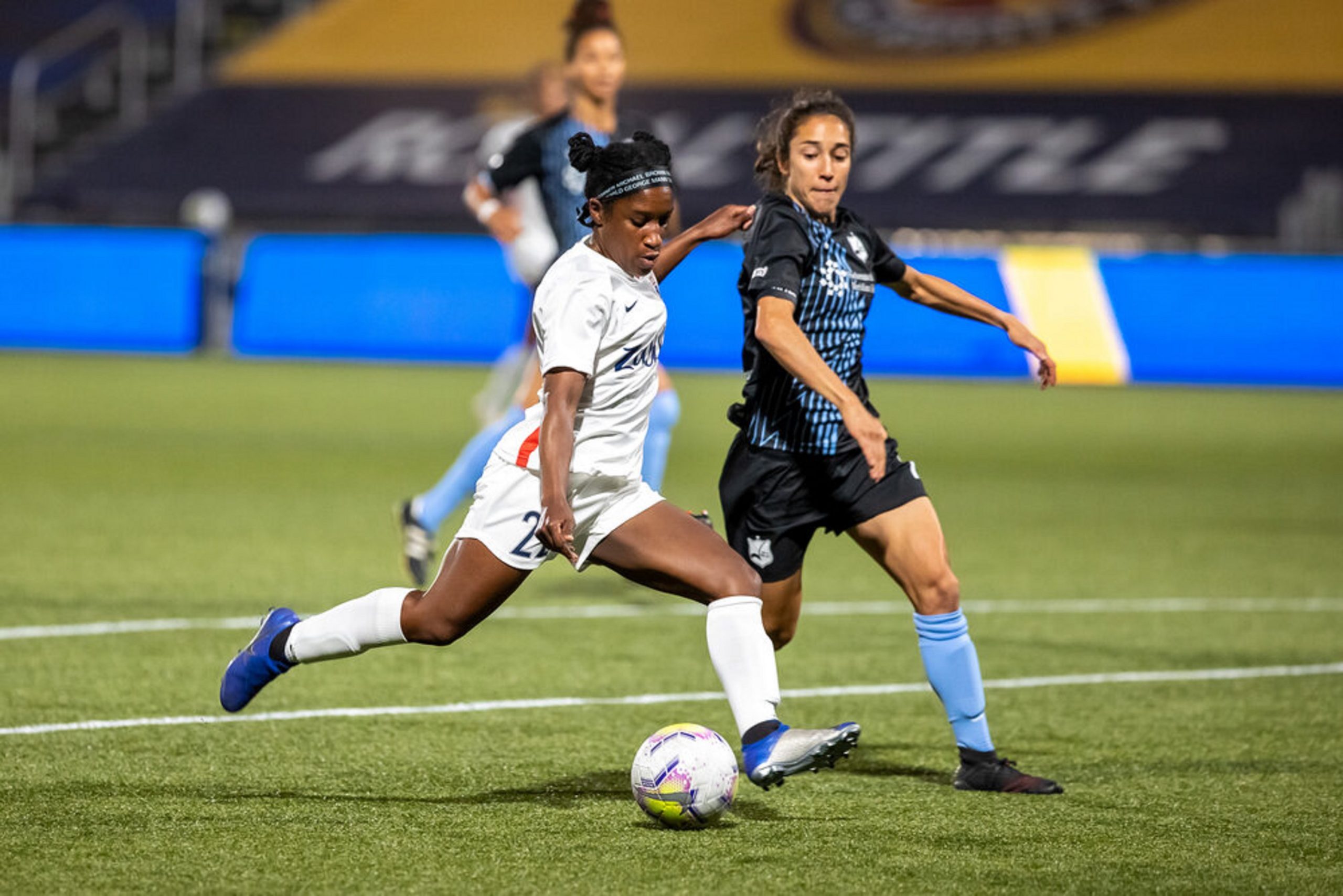21 Realizing the Universal Code of Conduct to Prevent and Address Maltreatment in Sport (UCCMS)
Gretchen Kerr
Themes
Maltreatment
Universal Code of Conduct
Athletes’ Voice
Learning Objectives
When you have completed this chapter, you will be able to:
LO1 Identify three precipitating factors to the development of the UCCMS;
LO2 Identify the research evidence used to inform the development of the UCCMS;
LO3 Identify the ways in which athletes’ voices informed the development of the UCCMS; and
LO4 Identify the next steps in realizing the UCCMS.
Overview
As a result of growing public awareness and research evidence regarding athlete maltreatment, the Universal Code of Conduct to Prevent and Address Maltreatment in Sport (UCCMS) has been developed. The UCCMS was informed by research evidence highlighting athletes’ experiences of maltreatment, including, psychological, physical, sexual harm and neglect. While the UCCMS identifies prohibited conduct, it represents only a first step in the safe sport journey. Next steps include the need for independent complaint and adjudication mechanisms, and extending the notion of safe sport beyond the prevention of harms to include optimization of the sport experience.
Key Dates
What is the Universal Code of Conduct to Prevent and Address Maltreatment in Sport (UCCMS)?
The Universal Code of Conduct to Prevent and Address Maltreatment in Sport (UCCMS) is a set of rules around behaviour for all Canadian stakeholders and participants in sport to follow. Written by national sport organizations (NSOs), multisport service organizations (MSOs), and Canadian Olympic and Paralympic Sport Institute (COPSI) Network members in 2019, it identifies prohibited conduct or those behaviours that will not be accepted within the sport context. By identifying standards, expectations and guidelines for behaviours in the sport context, the UCCMS can support those in sport by providing a structure to follow when addressing ethical dilemmas, including the reporting of a violation.
The UCCMS also serves to communicate the key values and commitments of sport to both internal and external audiences. In this case, the UCCMS was grounded in the Physical Activity and Sport Act[1] which reads as follows:
“The Government of Canada’s policy regarding sport is founded on the highest ethical standards and values, including […] the treatment of all persons with fairness and respect, the full and fair participation of all persons in sport and the fair, equitable, transparent and timely resolution of disputes in sport”.[2]
Why Was the UCCMS Developed?
The need for a universal code of conduct was called for, in part, due to the occurrence and widespread awareness of cases of athlete abuses both in Canada and abroad. While recognizing that athlete abuses have always occurred in sport, media coverage and public awareness of these experiences heightened in the latter half of the 2010 decade. The Barry Bennell case in U.K. football, the Jerry Sandusky case at Penn State University, USA (football), Larry Nassar in USA Gymnastics, Bertrand Charest (Alpine Skiing) and Matt Bell (Swimming) in Canada, are a few of many examples of high-profile cases of sexual abuse of athletes.
The heightened media attention on sexual abuse of athletes, in particular, was inevitably influenced by the MeToo Movement and the establishment of the hashtag #MeToo in 2017 which prompted individuals from around the world to publicly share their experiences of sexual violence. Although both men and women reported sexual exploitation by those in positions of power and authority, most of the voices came from girls and women. In addition to highlighting the prevalence of women’s experiences of sexual violence experiences, the hashtag #MeToo gave women a place to find validation and support.
Paralleling this heightened media attention was a growing body of research evidence regarding the harms experienced by athletes, including sexual, psychological, physical abuses, neglect, bullying and discrimination. Between 2010 and 2019, three national prevalence studies of athlete maltreatment were conducted in the U.K.,[3] Belgium and the Netherlands,[4] and in Canada.[5]
Despite the different samples of athletes, levels of sport engagement, and measurement tools, all three studies indicated that psychological harms were most frequently reported by athletes. Psychological harms can be categorized into verbal behaviours (e.g., demeaning, threatening, degrading comments), physical behaviours (e.g., throwing objects in anger without striking an athlete), and the active denial of attention and support (e.g., refusing to coach an athlete after a sub-par performance).[6] The Canadian prevalence study was one of the first to include an assessment of neglect, or the omission of care, with national team athletes reporting experiences of neglect on a repeated basis. Neglect is distinguished from the denial of attention and support in psychological abuse as neglect involves a lack of attention to the physical and psychological needs of an athlete, whereas psychological abuse is an act of commission or an active behaviour to withdraw attention and support.

The growing body of research evidence shows that despite the primary focus on sexual abuse by the media, psychological harms are far more commonly experienced by athletes. Moreover, consistent with the findings in the child abuse literature, emerging data in sport suggests that psychologically abusive experiences can have serious and deleterious effects for athletes’ mental health and well-being. For example, Willson et al. (2021) reported that retired women athletes from aesthetic sport experienced body dysmorphia, eating disorders, lowered self-esteem, and difficulties developing trust in relationships, as a result of the psychologically abusive behaviours of body shaming in their high-performance training. Similarly, Parent et al. (2021) reported that amongst French-Canadian youth athletes between the ages of 14 and 17 years, psychological violence and neglect as (well as sexual violence) were independently related to lower self-esteem, higher psychological distress and PTSD symptoms. These findings suggest the need to broaden the lens on maltreatment to include and extend beyond sexual forms of harm in recognition of the potentially harmful long-term effects of psychological abuse and neglect.
In Canada, the Former Federal Minister of Science and Sport, Kirsty Duncan (served from January 2018 until November 2019), was instrumental in the development of the UCCMS, stating that “a systemic culture shift is required to eliminate maltreatment, including sexual, emotional, and physical abuse, neglect, harassment, bullying, exploitation and discrimination”.[8] The development of the UCCMS was part of this systemic cultural shift.
Why Now?
Societal norms and expectations are constantly changing. What was okay in homes, schools, workplaces, and relationships in the past is not necessarily okay now and sport must be held to the same standards. For organized sport to thrive, it must align its practices to be consistent with other domains in which people, including young people, live, work, learn, and develop. For example, views about how to develop and nurture children and youth now recognize the extraordinary potentialities of young people that adults carry responsibilities to nurture.
Approaches to parenting and education have shifted from parent or teacher-centred, using command and control methods, to child and student-centred methods, using more democratic and humanistic methods. These changes in approaches are reflected in the increased attention to diverse ways of learning, eliminating punishment strategies in favour of positive discipline, and decision-making driven by the unique needs of the child. In addition to the shift to more democratic ways of interacting with youth, the MeToo Movement highlighted the ways in which power should and should not be used, thus providing clarity about, and raising the bar for, expected conduct within relationships of unequal power.
The increased attention to equity, diversity, and inclusion in society broadly, have also heightened the need for a cultural shift within sport. The Truth and Reconciliation Commission in Canada, the Black Lives Matter movement that has reached across the globe, and recognition of mental health challenges across diverse populations, are some of many examples of societal shifts that will permeate and call for action in sport.
In sum, sport cannot afford to be autonomous or disconnected from the norms and expectations that characterize broader society. Using child/youth-centred approaches, command and control coaching methods must give way to democratic styles in which power is shared with athletes in age and stage-appropriate ways; punitive strategies must be replaced with guidance, explanation and positive reinforcement and; safe, inclusive, and welcoming sport environments must become the highest priority.
Video 21.1 Gretchen Kerr: Why Safe Sport Now?
Video provided by Dr. Michele Donnelly, Panel Moderator and Dr. Michael Van Bussel, Conference Chair, 2021 Safe Sport Forum; and Dr. Julie Stevens, Director, Centre for Sport Capacity, Brock University. Used with permission. [Transcript]
In Practice:
Safe Sport Experiences for Youth

When engaging in sport as a participant, volunteer, coach, or administrator, look for behaviours that would not be deemed as acceptable in other youth-oriented endeavours such as in the classroom or other learning environments. How might sport leaders consider the following questions when providing safe sport experiences to youth?
- Do the athletes have opportunities to contribute to their sport experience, decisions that affect them, or to develop life skills?
- What are the potential implications of the sport experience you are engaging in or observing?
- How might the implications of the sports experience you are engaging in impact young participants?
- How might you alter your own or others’ behaviours to create a safer, more positive, and inclusive experience?
The Evidence-Base for the Development of the UCCMS
Research evidence that informed the development of the UCCMS included the following:
1. Prevalence studies
Prevalence studies indicated that the code of conduct needed to address and extend beyond sexual harms to include psychological and physical harms, and neglect. The Canadian prevalence study of maltreatment experiences of national team members[9] indicated the following experiences, which are noted in Table 21.1 below.
Table 21.1 Summary of Canadian Prevalence Study of National Team Member Maltreatment Experiences
| Types of Harms Reportedly Experienced on a Repeated Basis | Current National Team Members | Retired National Team Members (within last 10 years) |
| Psychological | 17% | 23% |
| Neglect | 15% | 22% |
| Sexual | 4% | 7% |
| Physical | 3% | 5% |
Note: Sample included 1,001 athletes, including 764 current and 237 retired athletes.
The mean age of participants was 27.7 years (SD = 9.09): 25.5 years (SD = 8.16) for current and 34.4 years (SD =8.57) for retired athletes.
Of the respondents, 61.5% identified as females, 38.4% identified as males, and 0.1% identified as other. Participants self-identified as racialized (9.7%), having a disability (11.6%), Indigenous (1.6%), and LGBTQ2I+ (7.3%).
Respondents represented 64 sports. The sports with the highest participation rates were gymnastics (5.5%), volleyball (5.4%), athletics (4.4%), swimming (3.8%), rowing (3.3%), rugby (3.5%), hockey (3.4%), and freestyle skiing (3.8%).
2. Normalization or Acceptance
The normalization or acceptance of psychologically harmful behaviours in the sport context has been well-documented.[10] Psychologically violent behaviours include:
-
- Negative verbal comments (e.g., threatening, humiliating, degrading, berating comments), including body shaming;
- Physically aggressive acts that serve to frighten or intimidate; and
- Deliberate denial of attention and support.[11]
Numerous authors have written about the widespread acceptance of these behaviours in sport as methods of athlete development in spite of the prohibition of such behaviours in other youth-populated settings such as schools and in spite of the fact that these practices run contrary to the vast body of evidence on effective learning and child development methods.
Interestingly, the normalization of psychologically harmful methods was the most contentious and highly debated aspect in the process of developing the UCCMS. When a draft of the UCCMS was circulated for feedback amongst sport stakeholders (e.g., sport administrators, coaches, athletes, sport science staff), many argued against the inclusion of these psychologically related behaviours, citing their importance for athlete development and mental toughness.
3. Research Findings
Research findings highlight the reluctance of athletes to disclose and/or report their experiences of harm. When Canadian National Team athletes were asked: “If you experienced abuse, harassment, bullying, or hazing, did you tell anyone?”, only 56% of current athletes and 52% of retired athletes responded “Yes.” Further, when these athletes were asked “If you experienced abuse, harassment, bullying or hazing, did you submit a formal report/complaint of your experience(s)?”, only 15% of current athletes and 13% of retired athletes responded “Yes.” The participating athletes cited reasons for not reporting including fear of negative repercussions for their athletic career, deliberate attempts to stay silent, normalization, lack of awareness of where to go with their concerns, absence of a confidential place to take their concerns, and lack of confidence that anything would be done about the harms they experienced.
Figure 21.1 Reasons for not Reporting
4. High-Profile Cases
Finally, to address the findings in high-profile cases, that other adults in positions of trust and authority knew about the occurrence of athlete maltreatment and failed to act upon this knowledge, the UCCMS was written to promote a collective responsibility. This means that all adults in the sport context have a duty to look out for the wellbeing of athletes, regardless of their age, and a duty to report when they notice inappropriate activity. Abuse often begins with small, inappropriate behaviour that if not addressed immediately will tend to escalate into more abusive situations.[12] Thus, intervening early in this way is critical. In addition to the legal duty to report child maltreatment, sexual and physical abuse, the UCCMS includes a duty to report concerns of inappropriate conduct. Reporting inappropriate conduct is important to ensure proper action is taken, expectations are re-established, and inappropriate behaviour doesn’t escalate into more severe violations. For example, if an adult loses their temper with an athlete and yells or throws an object once, this may be inappropriate but not abusive. But, rather than excusing the behaviour because it’s a “one-off”, it’s important to address the problematic nature of the behaviour and reinforce expected conduct so this behaviour is not viewed as acceptable and therefore may be reproduced.
Video 21.3 Gretchen Kerr: Studying Athletes’ Willingness to Report Incidents
Video provided by Dr. Michele Donnelly, Panel Moderator and Dr. Michael Van Bussel, Conference Chair, 2021 Safe Sport Forum; and Dr. Julie Stevens, Director, Centre for Sport Capacity, Brock University. Used with permission. [Transcript]
Incorporation of Athletes’ Voices
A key element of the development of the UCCMS was the incorporation of athletes’ voices throughout the process. The Canadian prevalence study was conducted in partnership with AthletesCAN, (please see Chapter 2 (Athletes First) for more about the athlete perspective on safe sport) and as a result, athletes contributed to the development of the survey questions, the recruitment of survey respondents, and the dissemination of findings. They held their own Safe Sport Summit to share and discuss the findings of the prevalence study in advance of the National Safe Sport Summit held in Ottawa in 2019. AthletesCAN representatives made a powerful presentation at the National Safe Sport Summit at which time they identified a number of consensus statements and recommendations; they received a standing ovation for their presentation.
One of the most controversial aspects of the UCCMS was the prohibition of sexual relations between athletes of any age and their coaches. While acknowledging that sexual relations between a coach and an adult athlete did not constitute a criminal offence, the athletes argued strongly and successfully that the power imbalance between a coach and athlete, even if both are adults, is so influential that it essentially negates the ability of the athlete to freely provide informed consent to a sexual relation.
Athletes were also instrumental in insisting that the same code of conduct exist regardless of sport, sport type, or sport-specific differences. These arguments were made in response to attempts by some to maintain flexibility and autonomy in making decisions about what constituted prohibited behaviours on the basis of sport-specific differences. For example, concerns were expressed by some sport administrators and coaches that because touching was involved in some sports and not in others, one set of rules could not apply broadly across all sports. Similarly, while body contact is permitted in sports such as ice hockey, it is not permitted in other settings such as on a pool deck, and, as a result, some were concerned about whether a generalizable code of conduct was feasible.
In response, the athletes insisted that it was possible – and necessary – to have a common set of prohibited behaviours regardless of sport type, and that any sport-specific differences would be accounted for in the complaint management process. Without such a harmonized approach, the athletes argued that athletes would continue to be vulnerable to experiences of harm, emphasizing that it is the autonomy of sport organizations that enables the acceptance of harmful behaviours that are prohibited in other youth-populated domains. The athletes won the day on this important argument.
Finally, the athletes argued strongly for a complaint mechanism that existed independently from their sport organization. They called for a confidential, arms-length organization to receive and address complaints regarding maltreatment. They attributed their lack of willingness to report concerns about maltreatment to the existing conflicts of interest inherent in having the sport organization receive and address concerns.
Next Steps in Realizing the UCCMS
Figure 21.2 Steps to Realize the UCCMS
1. Streamline the Independent Reporting and Complaint Processes
In July 2021, Canadian Heritage announced the establishment of independent reporting and complaint processes through the Sport Dispute Resolution Centre of Canada (SDRCC), a body formed in 2000 to offer tools to prevent and, when necessary, resolve conflicts. Although details are pending at the time of this writing, there are promising opportunities for sport participants to have access to transparent, confidential, and independent complaint processes. It will be the responsibility of the SDRCC to oversee and implement the UCCMS and to build upon the UCCMS by adding content pertaining to the reporting, complaint, and investigative processes, sanctions, and a potential public registry of sanctioned individuals. It will be essential that the SDRCC continue to engage athletes’ voices in the building of the reporting and complaint processes, and discussions about a public registry of sanctioned offenders.
2. Ensure Infusion of the UCCMS Throughout the Sport System, at All Levels
At the present time, the adoption of the UCCMS is required by National Sport Organizations (NSOs) only. Although some NSOs intend to require or encourage adoption of the UCCMS through their provincial/territorial counterparts, there is presently no guarantee that the UCCMS will be implemented at provincial/territorial, regional or local sport levels, thus potentially leaving non-national level athletes vulnerable. The adoption of the UCCMS will need to be infused through the sport system, from grassroots to high-performance sport, so all athletes regardless of type or level of sport, or geographical location in the country, are assured of the same access to complaint mechanisms.
3. Counter Forms of Resistance
With every cultural shift, some resistance can be expected. Next steps in the Safe Sport journey will inevitably involve some resistance and push-back including beliefs that change is not needed or possible, or that previous ways of behaving (“the old ways”) are better for athletic performance outcomes. To counter these forms of resistance, models of cultural change should be considered.[14] One of the ways to do this is to move beyond prohibited conduct by setting expected standards and helping people reach them. Additionally, it is imperative to address the bystanders and enablers that further entrench this resistance.
4. Shift the Focus from Prevention of Harm to Optimization of Experiences
Finally, the notion of safe sport should be expanded beyond preventing and addressing harms to methods of promoting safe, fulfilling, positive, and welcoming sport experiences. In accordance with the Government of Canada’s Physical Activity and Sport Act, optimizing sport experiences are characterized by such aspects as enjoyment, sense of achievement, inclusion, positive relationships, optimal physical health, a strong sense of self, and the development of life skills.
Importantly, the prevention of harm does not necessarily lead to optimal sport experiences, however, the reverse is true. If we focus our efforts as concerned parents, teammates, spectators and sport leaders on optimizing sport experiences, then safe sport becomes a natural by-product.
Video 22.4 Gretchen Kerr: The Duty to Report Concerns in Sport
Video provided by Dr. Michele Donnelly, Panel Moderator and Dr. Michael Van Bussel, Conference Chair, 2021 Safe Sport Forum; and Dr. Julie Stevens, Director, Centre for Sport Capacity, Brock University. Used with permission. [Transcript]
Conclusion
The UCCMS constitutes an important piece of the puzzle in preventing and addressing maltreatment in sport. Adopting a pan-Canadian approach to identifying prohibited conduct that is generalizable across sports represents significant progress. However, the UCCMS is only a first step. In addition to identifying and broadly disseminating processes regarding reporting and complaint management, significant attention is needed to determine appropriate sanctions for UCCMS violations, and a public registry of offenders. Athletes will need to be engaged in the determination of these next steps.
We mustn’t stop at identifying prohibited conduct; instead, we need to articulate what safe, healthy, positive and inclusive sport experiences look like. Future directions will include education and training to develop leaders with the competencies required to establish sport environments in which such positive and inclusive experiences are possible. Future directions will also include researchers providing the evidence that successful athletics performance outcomes are possible – and perhaps even more probable – with safe, healthy and inclusive sport.
 Self-Reflection
Self-Reflection
- Reflect on a time when you were participating in sport and the behaviours of another person made you feel badly about yourself. What were the circumstances? What was said or done? How else might the other person have behaved that would not have negatively impacted your self-respect?
- Reflect on a time when you and your team members lost an important game or performed poorly. How did the coach respond? How did the coach’s response make you feel? Can you think of times when the coach handled the situation well and when the coach did not handle the situation well? What were the differences in what was said or done? How did you feel in each situation?
- Reflect on a time when you were leading others in a sport endeavour. Are there things you said or did that in hindsight you would do differently in the future? What would you do differently and why? How will you know if your behaviour had its intended effects?
Key Terms
Further Research
With the recent implementation of the UCCMS at the national level of sport, it will be important to research the effects of the UCCMS. How have sport organizations implemented and communicated the UCCMS to their stakeholders? How has the UCCMS affected the disclosure and reporting rates of maltreatment? How will national sport organizations influence the adoption of the UCCMS at lower levels of sport? Will the adoption of the UCCMS influence stakeholders’ awareness of maltreatment and prohibited conduct?
How will education and training on the UCCMS be developed and disseminated, and will these be effective for behaviour change?
Suggested Assignments
- Building a Safe, Positive, Inclusive Sport Environment: What could you do as a sport leader to influence the sport culture to be safe, more positive and inclusive? How could you bring others along in this culture shift?
- Incorporating Athletes’ Voices in Promoting Safe Sport: How might you engage athletes, their input and recommendations, in the design, delivery, and evaluation of sport programmes?
- Compare and Contrast: Outline an approach to sport design and delivery that illustrates a prevention of harm approach. Outline an approach that illustrates an approach characterized by safety, inclusion and well-being. What are the differences and similarities between these approaches?
Figure Descriptions
Figure 21.1 This interactive feature demonstrates six different reasons for not reporting experiences of harm. They include fear of negative repercussions for their athletic career, deliberate attempts to stay silent, normalization, a lack of confidence that anything would be done about the harms they experienced, absence of a confidential place to take their concerns, and a lack of awareness of where to go with their concerns. [return to text]
Figure 21.2 This figure demonstrates the four next steps in realizing the UCCMS. Step 1 is to streamline the independent reporting and complaint process. The Sport Dispute Resolution Centre of Canada (SDRCC) will have to oversee and implement the UCCMS by adding content pertaining to the reporting, complaint & investigative processes, sanctions, and a potential public registry of sanctioned individuals. Step 2 is to ensure infusion of the UCCMS throughout the sport system, at all levels. The UCCMS will need to be adopted at all levels of the sport system, from grass-roots to high-performance sport. Step 3 is to counter forms of resistance. Resistance will need to be countered by encouraging cultural change via setting expected standards, and by addressing bystanders and enablers who entrench this resistance. Step 4 is to shift the focus from prevention of harm to optimization of experiences. Finally, a focus needs to be made on optimizing sport experiences, which are characterized by such aspects as enjoyment, sense of achievement, inclusion, positive relationships, optimal physical health, a strong sense of self, and the development of life skills. [return to text]
Sources
Alexander, K., Stafford, A., & Lewis, R. (2011). The experiences of children participating in organized sport in the UK. London: NSPCC.
AthletesCAN. (n.d.). Consensus statements. Retrieved November 10, 2021, from https://athletescan.com/en/athlete-zone/representation/safe-sport/consensus-statements
Canadian Heritage. (2019, May 21). Safe sport: Gender equity announcement. Retrieved November 10, 2021, from https://www.canada.ca/en/canadian-heritage/news/2019/05/safe-sport-g-ender-equity-announcement.html
Canadian Heritage. (2021, July 6). Minister Guilbeault announces new independent safe sport mechanism. Government of Canada. Retrieved November 10, 2021, from https://www.canada.ca/en/canadian-heritage/news/2021/07/minister-guilbeault-announces-new-independent-safe-sport-mechanism.html
Canadian Centre for Child Protection. (n.d.). Programs & initiatives: Commit to kids. Retrieved November 10, 2021, from https://www.protectchildren.ca/en/programs-and-initiatives/commit-to-kids/
Jacobs, F., Smits, F., & Knoppers, A. (2017). ‘You don’t realize what you see!’: The institutional context of emotional abuse in elite youth sport. Sport in Society, 20(1), 126–143. https://doi.org/10.1080/17430437.2015.1124567
Kerr, G., & Willson, E. (2020, November 1). New allegations of abuse have grounded Canada’s artistic swimming team. The Conversation. Retrieved November 10, 2021, from https://theconversation.com/new-allegations-of-abuse-have-grounded-canadas-artistic-swimming-team-148407
Kerr, G., Willson, E., & Stirling, A. (2019). Prevalence of maltreatment among current and former national team athletes. University of Toronto. 1-51. https://athletescan.com/sites/default/files/images/prevalence_of_maltreatment_reporteng.pdf
Physical Activity and Sport Act, SC 2003, c 2. https://laws-lois.justice.gc.ca/eng/acts/p-13.4/20030702/P1TT3xt3.html
Parent, S., Vaillancourt-Morel, M.-P., & Gillard, A., (2021). Interpersonal violence (IV) in sport and mental health outcomes in teenagers. Journal of Sport and Social Issues. https://doi.org/10.1177/01937235211043652
Scott, C. D., & Jaffe, D. T. (1988). Survive and thrive in times of change. Training and Development Journal, 42(4), p.25.
Smart, Z. (2021, July 2). Heil, top Canadian athletes call on federal government to address gaps in safe sport system. CBC Sports. Retrieved November 10, 2021, from https://www.cbc.ca/sports/olympics/summer/jennifer-heil-canadian-olympians-paralympians-open-letter-1.6088744
Stafford, A., Alexander, K., & Fry, D. (2015). ‘There was something that wasn’t right because that was the only place I ever got treated like that’: Children and young people’s experiences of emotional harm in sport. Childhood (Copenhagen, Denmark), 22(1), 121–137. https://doi.org/10.1177/0907568213505625
Stirling, A. E. (2009). Definition and constituents of maltreatment in sport: Establishing a conceptual framework for research practitioners. British Journal of Sports Medicine, 43(14), 1091–1099. https://doi.org/10.1136/bjsm.2008.051433
Stirling, A. E., & Kerr, G. A. (2008). Defining and categorizing emotional abuse in sport. European Journal of Sport Science, 8(4), 173–181. https://doi.org/10.1080/17461390802086281
Stirling, A. E., & Kerr, G. A. (2009). Abused athletes’ perceptions of the coach-athlete relationship. Sport in Society, 12(2), 227-239. https://doi-org.myaccess.library.utoronto.ca/10.1080/17430430802591019
Vertommen, T., Schipper-van Veldhoven, N., Wouters, K., Kampen, J. K., Brackenridge, C. H., Rhind, D. J. ., Neels, K., & Van Den Eede, F. (2016). Interpersonal violence against children in sport in the Netherlands and Belgium. Child Abuse & Neglect, 51, 223–236. https://doi.org/10.1016/j.chiabu.2015.10.006
Willson, E., & Kerr, G. (2021). Body shaming as a form of emotional abuse in sport. International Journal of Sport and Exercise Psychology, 1–19. https://doi.org/10.1080/1612197X.2021.1979079
Willson, E., Kerr, G., Stirling, A., & Buono, S. (2021). Prevalence of maltreatment among Canadian National Team athletes. Journal of Interpersonal Violence, 1–23. https://doi.org/10.1177/08862605211045096
- Physical Activity and Sport Act, 2003. ↵
- 4 (1). ↵
- Alexander et al., 2011. ↵
- Vertommen et al., 2016. ↵
- Kerr et al., 2019. ↵
- Stirling & Kerr, 2008. ↵
- Kerr & Willson, 2020. ↵
- Canadian Heritage, 2019. ↵
- Wilson et al., 2021. ↵
- e.g., Jacobs, 2017; Stafford et al., 2015; Stirling & Kerr, 2008; 2009. ↵
- Stirling & Kerr, 2008. ↵
- Canadian Centre for Child Protection, n.d. ↵
- Smart, 2021. ↵
- Scott & Jaffe, 1988. ↵
Universal Code of Conduct to Address Maltreatment in Sport, promulgated in 2020.
“The Government of Canada’s policy regarding sport is founded on the highest ethical standards and values, including [...] the treatment of all persons with fairness and respect, the full and fair participation of all persons in sport and the fair, equitable, transparent and timely resolution of disputes in sport.” (Government of Canada, 2003)
The omission of care; failing to enact a duty of care; failing to provide the necessities of life.
Volitional acts that result in or have the potential to result in physical or psychological harm. All types of "physical and/or emotional ill-treatment, sexual abuse, neglect, negligence and commercial or other exploitation, which results in actual or potential harm to health, survival, development or dignity in the context of a relationship of responsibility, trust or power” (World Health Organization, 2010).
Contact or non-contact sexual behaviours that results in or has the potential to result in harm.
Non-physical interactions that result in or have the potential to result in harm.
Contact or non-contact physical behaviours that result in or have the potential to result in harm.
Acceptance of harmful behaviours as normal.

 Counterpoint:
Counterpoint:
 In the News:
In the News:


